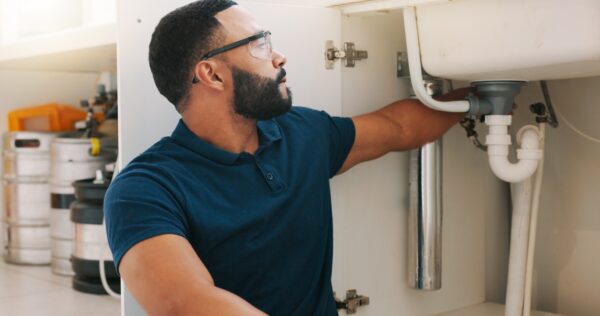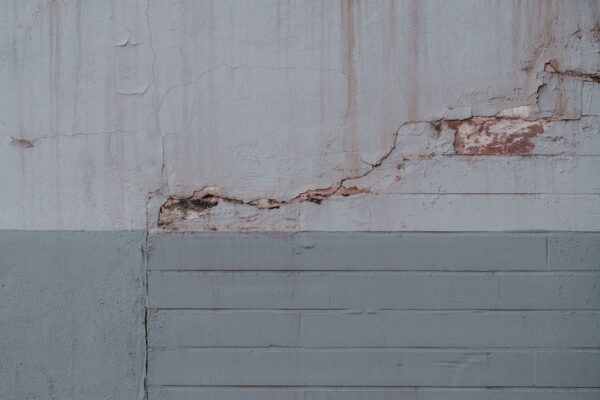Water heater safety is a critical component of HUD’s National Standards for the Physical Inspection of Real Estate (NSPIRE), and one of the key areas of focus under these protocols is the proper installation of Pressure Relief Valves (PRVs). For property managers and owners, it is essential to understand the correct positioning of pressure release valves on water heaters to avoid defects during inspections and ensure tenant safety.
The NSPIRE Standard for Pressure Release Valves on Water Heaters
The NSPIRE standard specifically outlines that the discharge piping of a water heater’s relief valve must be positioned between 2 and 6 inches above the flood plain. While this requirement may seem straightforward, there has been some confusion about how to interpret it, particularly regarding how the discharge pipe interacts with floor drains or drain pans.
Here’s the key rule to keep in mind:
The pressure relief valve’s discharge pipe must not terminate directly into a drain or extend deep into a floor drain or drain pan. Doing so could allow backflow in the event of a drain backup, potentially contaminating the water in the heater.
Deficiency 3 (Water Heater D3): An Overview
According to HUD’s NSPIRE guidance, Deficiency 3 for water heaters addresses improper installation of relief valve discharge piping. Specifically, the protocol states that:
- The discharge piping should be between 2 inches and 6 inches above the waste receptor flood-level (e.g., drain pans or floor drains).
- Piping that terminates more than 6 inches or less than 2 inches from the flood-level will be marked as a defect.
Why Positioning Matters
The temperature and pressure relief valve (TPR) on a water heater is a critical safety mechanism designed to release water if the pressure or temperature in the tank becomes too high. If installed improperly, the discharge pipe can allow contaminated water to flow back into the water heater, which could cause serious health and safety hazards. Proper positioning prevents water from backing up into the system.
If the discharge pipe extends directly into the drain, it risks contaminating the water in the heater in the event of a backup. Conversely, placing the discharge pipe too high above the flood-level could reduce its ability to effectively release water in an emergency.
NSPIRE Clarification: Acceptable Installations
Many property owners have used a common method of extending the discharge pipe into a floor drain or drain pan, but NSPIRE standards clarify that this is not acceptable. Here’s why:
- Backflow Risk: Directly draining into a floor or sink drain may cause backflow into the water heater in case of plumbing backups.
- Health Hazard: Contaminated water flowing back into the heater compromises water quality and can lead to health hazards for residents.
- Inspection Defect: If the discharge pipe is placed improperly—either terminating too high or low above the floor level—it will be cited as a defect under NSPIRE protocols.
In contrast, if your water heater’s pressure relief valve discharge pipe extends through the wall to the outside, this is considered compliant and will not be flagged as a defect during inspections.
Best Practices for Compliance with Water Heaters
To ensure your property remains compliant and avoids citations during NSPIRE inspections in regards to pressure relief valves on water heaters, consider these best practices:
- Correct Discharge Pipe Length: Make sure the discharge pipe extends 2 to 6 inches above the flood plain, such as a floor drain, drain pan, or any other designated waste receptor.
- Avoid Direct Floor Drain Terminations: Do not let the discharge pipe extend into the drain or pan. Doing so could result in a defect being flagged during an inspection.
- Inspect Existing Installations: If your building’s water heaters have been in place for a while, review their discharge piping to ensure compliance. This is particularly important if you’ve used common practices like routing pipes into drains or pans.
- External Drainage: Consider routing the discharge pipe to the exterior of the building, as this is acceptable under NSPIRE guidelines.
Why This Matters for Property Owners
For property managers and owners, ensuring NSPIRE compliance is crucial for two reasons:
- Inspection Scores: A defective PRV discharge pipe can lead to point deductions during REAC inspections, potentially impacting the overall score of your property. Repeated issues can trigger more frequent inspections and increased scrutiny from HUD.
- Tenant Safety: Improperly installed discharge pipes can present real safety hazards to tenants. By adhering to NSPIRE protocols, you protect both your residents and your property.
Questions?
Water heater safety is a vital part of maintaining compliant HUD housing. Properly positioning the temperature and pressure relief valve discharge piping ensures that your property remains up to code, safeguarding both your REAC inspection scores and the health of your residents. By following HUD’s NSPIRE standards, you can avoid unnecessary deductions during inspections while keeping your properties safe and up to standard.
At The Inspection Group, we specialize in preparing your property for REAC and NSPIRE inspections. From pre-inspection walkthroughs to appeals assistance, our team is here to ensure your property is inspection-ready. Contact us today to learn more about how we can help you maintain HUD compliance and improve your REAC scores.





